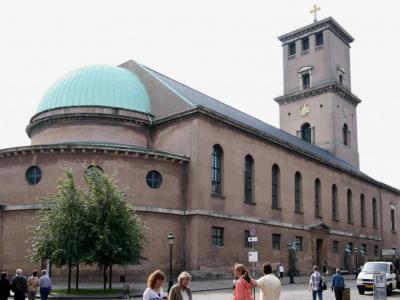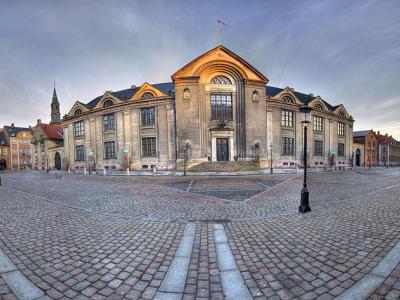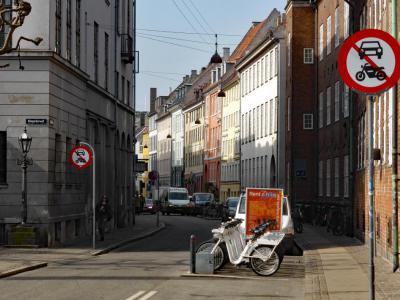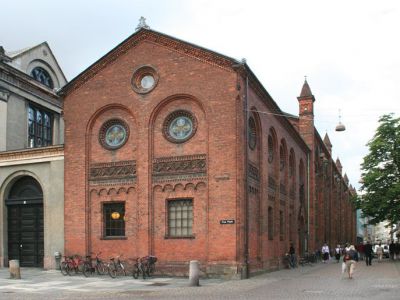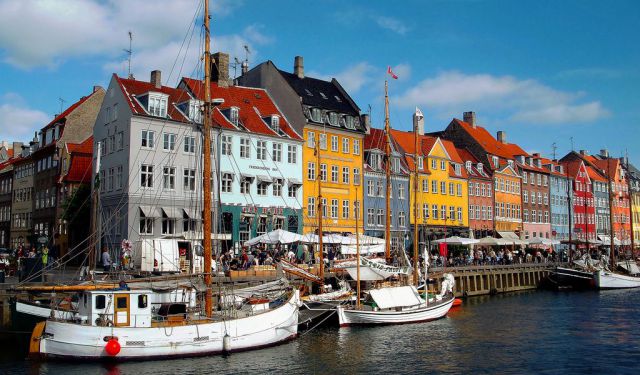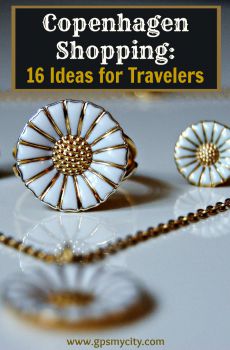
Latin Quarter Walking Tour (Self Guided), Copenhagen
One of the most interesting, young-spirited neighborhoods of Denmark's capital, the Latin Quarter is well known for its hangout spots, alternative shopping, and 18th-century architecture.
Back in the Middle Ages, the area surrounding Our Lady's Square (“Frue Plads” in Danish), right in the heart of it, was considered a “ray of light” in the overall darkness of those times. A prominent landmark in the square is the church of the same name.
Following the establishment in the vicinity of Copenhagen University, in 1479, the entire neighborhood transformed, livened up by students avid for knowledge. Ultimately, it came to be known as the Latin Quarter due to the prevailing use of the Latin language both inside the university and around.
Saint Peter's Church (Saint Petri Kirke) is another notable religious site nearby. A short walk away, you will find Study Street (Studiestræde), a quaint and picturesque lane lined with charming shops and cafes, making it an ideal spot for leisurely strolls.
Hans Christian Andersen, the famous Danish author, once called Vestergade No 18 his home. This former residence is now a museum.
For those with a passion for literature and learning, the Copenhagen University Library is a valuable asset, while Paludan's Bog & Cafe and Arnold Busck, a bookstore, also offer plenty of opportunities to indulge in reading.
The iconic Round Tower (Rundetarn) is a must-visit attraction that provides breathtaking panoramic views of the city. This includes Kultorvet Square, a bustling hub inside the Latin Quarter, known for its vibrant atmosphere, restaurants, and cultural events.
The Latin Quarter of Copenhagen is a captivating blend of history, culture, and academia. We hereby invite you to take a step back in time and immerse yourself in its intellectual and cultural richness. You won't want to miss this self-guided journey through Copenhagen's past and present!
Back in the Middle Ages, the area surrounding Our Lady's Square (“Frue Plads” in Danish), right in the heart of it, was considered a “ray of light” in the overall darkness of those times. A prominent landmark in the square is the church of the same name.
Following the establishment in the vicinity of Copenhagen University, in 1479, the entire neighborhood transformed, livened up by students avid for knowledge. Ultimately, it came to be known as the Latin Quarter due to the prevailing use of the Latin language both inside the university and around.
Saint Peter's Church (Saint Petri Kirke) is another notable religious site nearby. A short walk away, you will find Study Street (Studiestræde), a quaint and picturesque lane lined with charming shops and cafes, making it an ideal spot for leisurely strolls.
Hans Christian Andersen, the famous Danish author, once called Vestergade No 18 his home. This former residence is now a museum.
For those with a passion for literature and learning, the Copenhagen University Library is a valuable asset, while Paludan's Bog & Cafe and Arnold Busck, a bookstore, also offer plenty of opportunities to indulge in reading.
The iconic Round Tower (Rundetarn) is a must-visit attraction that provides breathtaking panoramic views of the city. This includes Kultorvet Square, a bustling hub inside the Latin Quarter, known for its vibrant atmosphere, restaurants, and cultural events.
The Latin Quarter of Copenhagen is a captivating blend of history, culture, and academia. We hereby invite you to take a step back in time and immerse yourself in its intellectual and cultural richness. You won't want to miss this self-guided journey through Copenhagen's past and present!
How it works: Download the app "GPSmyCity: Walks in 1K+ Cities" from Apple App Store or Google Play Store to your mobile phone or tablet. The app turns your mobile device into a personal tour guide and its built-in GPS navigation functions guide you from one tour stop to next. The app works offline, so no data plan is needed when traveling abroad.
Latin Quarter Walking Tour Map
Guide Name: Latin Quarter Walking Tour
Guide Location: Denmark » Copenhagen (See other walking tours in Copenhagen)
Guide Type: Self-guided Walking Tour (Sightseeing)
# of Attractions: 10
Tour Duration: 1 Hour(s)
Travel Distance: 1.7 Km or 1.1 Miles
Author: EmmaS
Sight(s) Featured in This Guide:
Guide Location: Denmark » Copenhagen (See other walking tours in Copenhagen)
Guide Type: Self-guided Walking Tour (Sightseeing)
# of Attractions: 10
Tour Duration: 1 Hour(s)
Travel Distance: 1.7 Km or 1.1 Miles
Author: EmmaS
Sight(s) Featured in This Guide:
- Our Lady's Church and Square
- Copenhagen University
- St. Peter's Church (St. Petri Kirke)
- Studiestræde (Study Street)
- Vestergade No 18 – H. C. Andersen's Former Residence
- Copenhagen University Library
- Paludan's Bog & Cafe
- Arnold Busck (book store)
- Round Tower (Rundetarn)
- Kultorvet Square
1) Our Lady's Church and Square
Situated next to the historic main building of the University of Copenhagen, Church of Our Lady is among the prominent religious landmarks in the city. While less dramatic than the typical Cathedral, its marble stations of the cross far better depict the suffering of Jesus than most and the large organ is an impressive sight. Outside, it looks a little like the Pantheon in Rome, with statues of David and Moses on either side of the doors.
Constructed in 1829, the present church was rebuilt in the then-modern neo-classical style following a British bombardment during the Napoleonic wars. Measuring a hefty 33 meters in width and 83 meters in length, it can seat at least 1100 people if all galleries are left open. There are four church bells housed in the tower, one of which is the heaviest in Denmark at 4 tons.
The interior is decorated with the twelve apostles (one in front of each of the piers of the central nave), the Risen Christ displaying the wounds in his body (in a niche above the altar) and the baptismal font in the form of an angel holding a large scallop shell, all in Italian carrara marble. All of these sculptures were completed in Rome by the famous Danish sculptor Bertel Thorvaldsen, whose bronze bust is on display in the aisles along with many portraits of bishops and deans.
Why You Should Visit:
This church is of very severe exterior appearance but upon stepping inside, you become engulfed with the beautiful lighting and outstanding decorations, statues, altar, columns, ceiling and arches.
Tip:
If possible, try to come during the jazz service on Sunday, as part of the yearly Copenhagen Jazz Festival – but come early. That's an event you will remember forever: informal and at the same time very inspiring.
Constructed in 1829, the present church was rebuilt in the then-modern neo-classical style following a British bombardment during the Napoleonic wars. Measuring a hefty 33 meters in width and 83 meters in length, it can seat at least 1100 people if all galleries are left open. There are four church bells housed in the tower, one of which is the heaviest in Denmark at 4 tons.
The interior is decorated with the twelve apostles (one in front of each of the piers of the central nave), the Risen Christ displaying the wounds in his body (in a niche above the altar) and the baptismal font in the form of an angel holding a large scallop shell, all in Italian carrara marble. All of these sculptures were completed in Rome by the famous Danish sculptor Bertel Thorvaldsen, whose bronze bust is on display in the aisles along with many portraits of bishops and deans.
Why You Should Visit:
This church is of very severe exterior appearance but upon stepping inside, you become engulfed with the beautiful lighting and outstanding decorations, statues, altar, columns, ceiling and arches.
Tip:
If possible, try to come during the jazz service on Sunday, as part of the yearly Copenhagen Jazz Festival – but come early. That's an event you will remember forever: informal and at the same time very inspiring.
2) Copenhagen University
The Latin Quarter is home to Copenhagen's University since the Middle Ages, when Latin used to be the primary language of education. Established in 1479 by a Papal bull, in close location to the Church of Our Lady, it had a predominantly theological focus up until the 18th century when, through various reforms, science and the humanities replaced theology as the main subjects studied and taught. Still, the first female student was enrolled here no sooner than 1877.
A number of prominent scientific theories and schools of thought are namesakes of the institution. The famous Copenhagen Interpretation of quantum mechanics was conceived at the Niels Bohr Institute, which is part of the university. Outside the main building, a busts honor Bohr himself, who won the the 1922 Physics Prize for his model of the structure of the atom and, some twenty years later, helped develop the atomic bomb.
If the doors are open, enter a colorful lobby, starring Athena and Apollo. The frescoes celebrate high thinking, with themes such as wisdom's triumph over barbarism. Notice how harmoniously the architecture, sculpture, and painting all combine.
A number of prominent scientific theories and schools of thought are namesakes of the institution. The famous Copenhagen Interpretation of quantum mechanics was conceived at the Niels Bohr Institute, which is part of the university. Outside the main building, a busts honor Bohr himself, who won the the 1922 Physics Prize for his model of the structure of the atom and, some twenty years later, helped develop the atomic bomb.
If the doors are open, enter a colorful lobby, starring Athena and Apollo. The frescoes celebrate high thinking, with themes such as wisdom's triumph over barbarism. Notice how harmoniously the architecture, sculpture, and painting all combine.
3) St. Peter's Church (St. Petri Kirke)
Saint Peter's Church, located in the Latin Quarter of Copenhagen, serves as the parish church for the city's German-speaking community. With origins dating back to the 12th century, the church is first documented in 1304 and is considered the oldest building in central Copenhagen. It underwent significant reconstruction following a fire in 1380 and was one of four Catholic parish churches in the city during the Middle Ages.
Post-Reformation, the church was repurposed briefly as a canon and bell foundry before being presented to the German-speaking populace by Frederick II in 1585. Renowned architect Hans van Steenwinckel the Elder renovated the church, adding a gablet upper floor to the initially uncompleted tower. This was later replaced by a spire in the 17th century.
Throughout its history, Saint Peter's Church has been a focal point for Copenhagen's political, economic, cultural, and military elite. The congregation's growth necessitated multiple expansions, including the addition of northern and southern transepts by Christian IV in the 1630s and a further extension by Christian V in the 1690s.
The church features a distinctive complex of sepulchral chapels, started in 1643 and completed by Hans van Steenwinckel the Youngest in the late 17th century. These chapels house numerous tombs and epitaphs of notable German families in Denmark, with sarcophagi and coffins arranged in layers within underground crypts.
Severely damaged in the Copenhagen Fire of 1728, Saint Peter's Church was largely rebuilt by Johan Cornelius Krieger. The interior was redesigned, and a new copper-clad spire was added in 1756-57, which survived the British bombardment during the Battle of Copenhagen in 1807. The church now sports a cruciform layout with significant portions dating back to the mid-15th century. Its main entrance, adorned with a Baroque portal crafted by Diderik Gercken in 1731, and a Rococo-style spire, reflects the architectural evolution and historical significance of this venerable institution.
Post-Reformation, the church was repurposed briefly as a canon and bell foundry before being presented to the German-speaking populace by Frederick II in 1585. Renowned architect Hans van Steenwinckel the Elder renovated the church, adding a gablet upper floor to the initially uncompleted tower. This was later replaced by a spire in the 17th century.
Throughout its history, Saint Peter's Church has been a focal point for Copenhagen's political, economic, cultural, and military elite. The congregation's growth necessitated multiple expansions, including the addition of northern and southern transepts by Christian IV in the 1630s and a further extension by Christian V in the 1690s.
The church features a distinctive complex of sepulchral chapels, started in 1643 and completed by Hans van Steenwinckel the Youngest in the late 17th century. These chapels house numerous tombs and epitaphs of notable German families in Denmark, with sarcophagi and coffins arranged in layers within underground crypts.
Severely damaged in the Copenhagen Fire of 1728, Saint Peter's Church was largely rebuilt by Johan Cornelius Krieger. The interior was redesigned, and a new copper-clad spire was added in 1756-57, which survived the British bombardment during the Battle of Copenhagen in 1807. The church now sports a cruciform layout with significant portions dating back to the mid-15th century. Its main entrance, adorned with a Baroque portal crafted by Diderik Gercken in 1731, and a Rococo-style spire, reflects the architectural evolution and historical significance of this venerable institution.
4) Studiestræde (Study Street)
Even though Studiestræde runs parallel to the busy shopping street Strøget, it's relaxed in a very pleasant way; a perfect place to relax with a drink at one of the many cafés after bargain-hunting at the equally numerous vintage shops located here. If Strøget is too mainstream for your taste, Studiestræde is where you might find whatever you are looking for.
It's also one of the streets of the Latin Quarter that still maintains the charm of Copenhagen's past. Have a look at the old buildings; they may not say much at ground level, but look up! Those colorful facades have not changed much, still keeping their uneven windows. They have been silent witnesses to student life for over two centuries!
The building at No. 6 was built as a professorial residence in 1795 and was home to the Technical College from 1829 until 1890. Its first director lived in the building from 1824 until his death. Most of the other buildings along the first section of the street (until Vester Voldgade) date from the years after the Copenhagen Fire of 1795 and many of them are listed.
It's also one of the streets of the Latin Quarter that still maintains the charm of Copenhagen's past. Have a look at the old buildings; they may not say much at ground level, but look up! Those colorful facades have not changed much, still keeping their uneven windows. They have been silent witnesses to student life for over two centuries!
The building at No. 6 was built as a professorial residence in 1795 and was home to the Technical College from 1829 until 1890. Its first director lived in the building from 1824 until his death. Most of the other buildings along the first section of the street (until Vester Voldgade) date from the years after the Copenhagen Fire of 1795 and many of them are listed.
5) Vestergade No 18 – H. C. Andersen's Former Residence
Back on September 6th, 1819, a lanky 14-year-old named Hans Christian Andersen arrived in Copenhagen for the very first time. Dreams in tow and absolutely no idea where he’s going—his confidence was never in short supply. Andersen checked into the Gardergården inn at Vestergade 18, a humble little spot he stumbled upon by tailing some unsuspecting travelers through Vesterport. Bold move? Definitely. Budget-friendly? Temporarily. He bunked in a tiny room until his money ran out—which, let’s be honest, didn’t take long.
He didn’t know a soul in the city, but in true fairytale fashion, he believed—or knew, rather—that this bustling town would be the launchpad for his greatness. And it was.
Now, Vestergade, where Andersen first crash-landed, is no random stretch of road. Most of its buildings sprouted up after the big fire of 1795, but the street itself is a seasoned traveler—it dates back to the Middle Ages. Back then, it was the western artery, connecting Old Square (once the most important city square) to the Western City Gate.
In the 1930s through the '50s, city planners tried their best to modernize it—widen it, straighten it, make it less quirky. But locals and preservationists weren't having any of it. Thanks to their efforts (and some healthy civic stubbornness), Vestergade still holds onto its old-school charm and medieval wiggle. It’s a crooked little time capsule—just the way Hans would have remembered it.
He didn’t know a soul in the city, but in true fairytale fashion, he believed—or knew, rather—that this bustling town would be the launchpad for his greatness. And it was.
Now, Vestergade, where Andersen first crash-landed, is no random stretch of road. Most of its buildings sprouted up after the big fire of 1795, but the street itself is a seasoned traveler—it dates back to the Middle Ages. Back then, it was the western artery, connecting Old Square (once the most important city square) to the Western City Gate.
In the 1930s through the '50s, city planners tried their best to modernize it—widen it, straighten it, make it less quirky. But locals and preservationists weren't having any of it. Thanks to their efforts (and some healthy civic stubbornness), Vestergade still holds onto its old-school charm and medieval wiggle. It’s a crooked little time capsule—just the way Hans would have remembered it.
6) Copenhagen University Library
The Copenhagen University Library, located in Copenhagen, serves as the principal research library for the University of Copenhagen. Established in 1482, it holds the distinction of being the oldest library in Denmark. The library's origins are tied closely to the university itself, which was founded just three years earlier in 1479. Its foundation was marked by the donation of a book collection by the university's vice-rector, Peder Albertsen. The library's first designated building was the House of the Holy Ghost, and in 1553, a dedicated library structure was inaugurated at the current site of the university's main building. This building facilitated the library's functions for a century.
The historical main building, located in Fiolstræde, is a celebrated example of Neo-Gothic architecture, designed by Johan Daniel Herholdt and completed in 1861. Herholdt, influenced by his travels and observations—specifically the Crystal Palace in London and the Bibliothèque Sainte-Geneviève in Paris—introduced a revolutionary structural system using cast iron to mitigate the risk of fire. His design also incorporated elements inspired by northern Italian cathedral architecture, notably the Church of San Fermo in Verona. Notable features include hive-like column terminations and a façade designed to complement the university's seven gabled fronts facing Frue Plads. The library's interiors were adorned by Georg Hilker, a prominent Danish decorative painter of that era.
Through its rich history and architectural significance, the Copenhagen University Library not only serves as a repository of knowledge but also as a landmark of Danish cultural and architectural heritage.
The historical main building, located in Fiolstræde, is a celebrated example of Neo-Gothic architecture, designed by Johan Daniel Herholdt and completed in 1861. Herholdt, influenced by his travels and observations—specifically the Crystal Palace in London and the Bibliothèque Sainte-Geneviève in Paris—introduced a revolutionary structural system using cast iron to mitigate the risk of fire. His design also incorporated elements inspired by northern Italian cathedral architecture, notably the Church of San Fermo in Verona. Notable features include hive-like column terminations and a façade designed to complement the university's seven gabled fronts facing Frue Plads. The library's interiors were adorned by Georg Hilker, a prominent Danish decorative painter of that era.
Through its rich history and architectural significance, the Copenhagen University Library not only serves as a repository of knowledge but also as a landmark of Danish cultural and architectural heritage.
7) Paludan's Bog & Cafe
If you want a really filling breakfast/brunch without breaking the bank, stop by this restful place. Located in the Latin Quarter just across from the University Library, Paludan is Denmark's oldest book café. As per their website, "The café’s clear objective is to combine the traditional bookstore with a functioning eatery, where service is top notch in both places."
Paludan's sells both used and new books and has a wide selection of fiction/non-fiction books in English, Danish and other languages. Food-wise, there are options for everybody: meat-based or vegetarian, seafood, Asian, very simple dishes, non-dairy, gluten-free, low calories, etc. For those first timers, go to the left as you walk in and order at the counter. There are menus in English as well, making it easy to pick whatever it is you want. After placing the order, find a place to sit and they will bring the food out to you. Either eat inside and be surrounded by bookshelves or sit outside and enjoy the street views. Service is quick, and you get very good value for the price. Can't ask for much more!
Paludan's sells both used and new books and has a wide selection of fiction/non-fiction books in English, Danish and other languages. Food-wise, there are options for everybody: meat-based or vegetarian, seafood, Asian, very simple dishes, non-dairy, gluten-free, low calories, etc. For those first timers, go to the left as you walk in and order at the counter. There are menus in English as well, making it easy to pick whatever it is you want. After placing the order, find a place to sit and they will bring the food out to you. Either eat inside and be surrounded by bookshelves or sit outside and enjoy the street views. Service is quick, and you get very good value for the price. Can't ask for much more!
8) Arnold Busck (book store)
Arnold Busck, a renowned name in the Danish book retail industry, was founded in 1896 in Copenhagen by Arnold Busck and J.L. Wisbech, originally under the name Busck & Wisbech. The bookstore moved to Gothersgade in 1901 and became solely known as Arnold Busck after Wisbech departed in 1902. Over the years, it expanded by acquiring Nyt Nordisk Forlag in 1922 and Det Schønbergske Forlag in 1965. The leadership of the company passed through generations of the Busck family, with Helge Arnold Busck taking over in 1941, followed by his son Ole Arnold Busck in 1969.
Located on Købmagergade, near the bustling Strøget—one of Copenhagen’s busiest shopping areas—and close to the University of Copenhagen, Arnold Busck became a cultural staple in the city. Initially catering to collegiate literature students, the store later broadened its audience to the general public, emphasizing a rich selection of art and architecture books, as well as a substantial collection of fiction.
The store remains a beloved fixture in Copenhagen, housed in a three-story building that has been part of the city's fabric since the early 1900s. It offers a vast array of books on various subjects including arts, architecture, photography, food, and wine, alongside children’s books, audiobooks, tourist guides, and maps. The store is also known for its extensive collection of books in both Danish and English. Adding to its charm is the famous Baresso coffee bar on the second floor, making it a popular destination for both locals and tourists alike. The yearly sale event at Arnold Busck is especially popular, drawing crowds eager for book bargains in a vibrant city atmosphere.
Located on Købmagergade, near the bustling Strøget—one of Copenhagen’s busiest shopping areas—and close to the University of Copenhagen, Arnold Busck became a cultural staple in the city. Initially catering to collegiate literature students, the store later broadened its audience to the general public, emphasizing a rich selection of art and architecture books, as well as a substantial collection of fiction.
The store remains a beloved fixture in Copenhagen, housed in a three-story building that has been part of the city's fabric since the early 1900s. It offers a vast array of books on various subjects including arts, architecture, photography, food, and wine, alongside children’s books, audiobooks, tourist guides, and maps. The store is also known for its extensive collection of books in both Danish and English. Adding to its charm is the famous Baresso coffee bar on the second floor, making it a popular destination for both locals and tourists alike. The yearly sale event at Arnold Busck is especially popular, drawing crowds eager for book bargains in a vibrant city atmosphere.
9) Round Tower (Rundetarn) (must see)
The Round Tower – Copenhagen’s answer to the question: “What if we made a giant architectural cinnamon roll… but for science?” This 17th-century spiral of brick in the heart of the Danish capital was “cooked up” by King Christian IV as part of his grand architectural project, originally intended as an observatory for the astronomer genius Tycho Brahe.
Back in the 1600s, Europe was getting really into astronomy. The Round Tower came with its own academic library, the Trinitatis Church, and a university chapel. The spiral ramp was so strong and wide that one could easily ride a horse or even drive a carriage up and down it. Apparently, some kings did actually, including Russian Tsar Peter the Great. Because stairs are for the common folk...
Now, if you're a fan of Hans Christian Andersen, you're gonna love this. The Round Tower pops up in “The Tinderbox.” That’s the one where a soldier meets a witch, climbs into a hollow tree, and finds three coin-filled vaults guarded by increasingly horrifying dogs. The biggest of which has eyes “the size of the Round Tower.” Subtle product placement, Hans...
Today, tourists from all corners of the Earth climb its 7.5-turn helical corridor just to snap that perfect panoramic selfie of the city. Because it’s not just a tower but a slow-motion ascent into Danish history, science, and surprisingly chic art installations.
As you wind your way up, your first pitstop is a gallery space featuring contemporary art that occasionally makes you question your understanding of gravity. Then it’s on to the bell loft – because what's a tower without a good ol’ bell room? And finally, the key attraction: the observatory itself, complete with a 360-degree view of Copenhagen. There’s even a thick glass platform near the top – for the brave souls who enjoy standing on transparent floors and peering into the abyss.
Tip:
There’s a cozy café nearby for a crowd-free coffee break, a blessedly clean toilet halfway up, and a souvenir shop with actual quality stuff – not your usual tourist tat. So take your time, bring your curiosity, and maybe leave the horse at home...
Back in the 1600s, Europe was getting really into astronomy. The Round Tower came with its own academic library, the Trinitatis Church, and a university chapel. The spiral ramp was so strong and wide that one could easily ride a horse or even drive a carriage up and down it. Apparently, some kings did actually, including Russian Tsar Peter the Great. Because stairs are for the common folk...
Now, if you're a fan of Hans Christian Andersen, you're gonna love this. The Round Tower pops up in “The Tinderbox.” That’s the one where a soldier meets a witch, climbs into a hollow tree, and finds three coin-filled vaults guarded by increasingly horrifying dogs. The biggest of which has eyes “the size of the Round Tower.” Subtle product placement, Hans...
Today, tourists from all corners of the Earth climb its 7.5-turn helical corridor just to snap that perfect panoramic selfie of the city. Because it’s not just a tower but a slow-motion ascent into Danish history, science, and surprisingly chic art installations.
As you wind your way up, your first pitstop is a gallery space featuring contemporary art that occasionally makes you question your understanding of gravity. Then it’s on to the bell loft – because what's a tower without a good ol’ bell room? And finally, the key attraction: the observatory itself, complete with a 360-degree view of Copenhagen. There’s even a thick glass platform near the top – for the brave souls who enjoy standing on transparent floors and peering into the abyss.
Tip:
There’s a cozy café nearby for a crowd-free coffee break, a blessedly clean toilet halfway up, and a souvenir shop with actual quality stuff – not your usual tourist tat. So take your time, bring your curiosity, and maybe leave the horse at home...
10) Kultorvet Square
Kultorvet Square, nestled in the Old Town of Copenhagen, stands as a vibrant public space rich in history and culture. The name, which translates to "The Coal Market," evolved from its initial role as a hub for trading charcoal, firewood, and peat, strategically positioned near the Northern City Gate. This location was convenient for colliers, peat gatherers, and farmers from North Zealand.
Over the years, the square expanded from its original, smaller footprint through successive demolitions and new constructions. Its architecture reflects a timeline of rebuilding and stylistic changes, with surviving buildings like No. 14 on the corner with Sankt Gertruds Stræde marking its early post-fire reconstruction from the 1730s. Other notable structures include the 1810 buildings designed by Christian Frederik Hansen, and the Historicist Kultorvet Pharmacy built in 1895 by Valdemar Ingemann, noted for its dismantled spire.
Today, Kultorvet is a pedestrian-friendly zone that stretches from Nørreport station to Amagertorv along Strøget. It is a lively area lined with cafés and shops, renowned for hosting outdoor concerts during the summer. A standout feature is the 2013 renovation that introduced a circular water feature, serving both as a decorative element and a functional bandstand for events. Another point of interest is one of Copenhagen’s old telephone kiosks, adding a touch of historical quaintness to the area.
Art also plays a role in defining the square's character, exemplified by Hanne Varming's bronze statue "The Elder Mother" (Hyldemor), inspired by Hans Christian Andersen's tale and Varming's great grandparents. This statue depicts an elderly couple in contemplation, enriching the square with a sense of history and personal memory.
Over the years, the square expanded from its original, smaller footprint through successive demolitions and new constructions. Its architecture reflects a timeline of rebuilding and stylistic changes, with surviving buildings like No. 14 on the corner with Sankt Gertruds Stræde marking its early post-fire reconstruction from the 1730s. Other notable structures include the 1810 buildings designed by Christian Frederik Hansen, and the Historicist Kultorvet Pharmacy built in 1895 by Valdemar Ingemann, noted for its dismantled spire.
Today, Kultorvet is a pedestrian-friendly zone that stretches from Nørreport station to Amagertorv along Strøget. It is a lively area lined with cafés and shops, renowned for hosting outdoor concerts during the summer. A standout feature is the 2013 renovation that introduced a circular water feature, serving both as a decorative element and a functional bandstand for events. Another point of interest is one of Copenhagen’s old telephone kiosks, adding a touch of historical quaintness to the area.
Art also plays a role in defining the square's character, exemplified by Hanne Varming's bronze statue "The Elder Mother" (Hyldemor), inspired by Hans Christian Andersen's tale and Varming's great grandparents. This statue depicts an elderly couple in contemplation, enriching the square with a sense of history and personal memory.
Walking Tours in Copenhagen, Denmark
Create Your Own Walk in Copenhagen
Creating your own self-guided walk in Copenhagen is easy and fun. Choose the city attractions that you want to see and a walk route map will be created just for you. You can even set your hotel as the start point of the walk.
Hans Christian Andersen's Copenhagen
Before Disney glamorized fairy tales, Hans Christian Andersen was the original master of childhood magic. Best known for stories like The Little Mermaid, The Ugly Duckling, The Emperor’s New Clothes, and Thumbelina, Andersen essentially built the foundation of fairy-tale literature—dark undertones and all...
Born in 1805 in Odense, in the middle of the country, Andersen grew up in poverty,... view more
Tour Duration: 2 Hour(s)
Travel Distance: 2.9 Km or 1.8 Miles
Born in 1805 in Odense, in the middle of the country, Andersen grew up in poverty,... view more
Tour Duration: 2 Hour(s)
Travel Distance: 2.9 Km or 1.8 Miles
Copenhagen Introduction Walking Tour
The Danish capital Copenhagen is a fairy tale of a city, full of peculiarities. Its name – derived from the Danish words for merchant ("køpmann") and harbor ("havn") – reflects the city's origin as a place of commerce by the sea. A humble fishing village, established in the 10th century AD, some hundred years later it emerged as a town after Bishop Absalon, recognized... view more
Tour Duration: 2 Hour(s)
Travel Distance: 2.7 Km or 1.7 Miles
Tour Duration: 2 Hour(s)
Travel Distance: 2.7 Km or 1.7 Miles
Little Mermaid Walking Tour
Back in the 18th century, Denmark was in the throes of an economic boom. Constructed during the reign of King Frederick V (hence the name), the district of Frederiksstaden attests to that with its beautiful architecture, measuring up to the projects from the same period in Berlin, Paris, and Vienna. This tour will guide you through the area's broad streets lined by bourgeois houses, mansions,... view more
Tour Duration: 2 Hour(s)
Travel Distance: 2.8 Km or 1.7 Miles
Tour Duration: 2 Hour(s)
Travel Distance: 2.8 Km or 1.7 Miles
Castle Island (Slotsholmen) Walking Tour
Traditionally seen as the birthplace of Copenhagen, Castle Island (Slotsholmen) gave rise to the Danish capital with a small fortress built on it in the 12th century AD. Since the Middle Ages, this area, also known as the "Island of Power," has been the center of Denmark's government. It houses several prominent landmarks that played significant roles in the country's history.
... view more
Tour Duration: 1 Hour(s)
Travel Distance: 1.6 Km or 1 Miles
... view more
Tour Duration: 1 Hour(s)
Travel Distance: 1.6 Km or 1 Miles
Useful Travel Guides for Planning Your Trip
Copenhagen Shopping: 16 Distinctively Denmark Things to Buy
Denmark is renowned for simple, industrial and functional design, as well as bohemian and everyday fashion-wear for the individual urban living. The capital Copenhagen, home to Copenhagen Fashion Week twice a year and biannual INDEX: Design to Improve Life - the world’s biggest design awards, is...
The Most Popular Cities
/ view all
